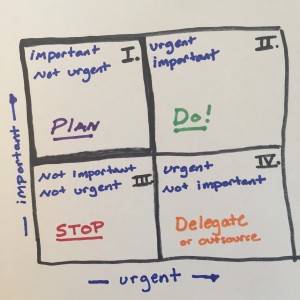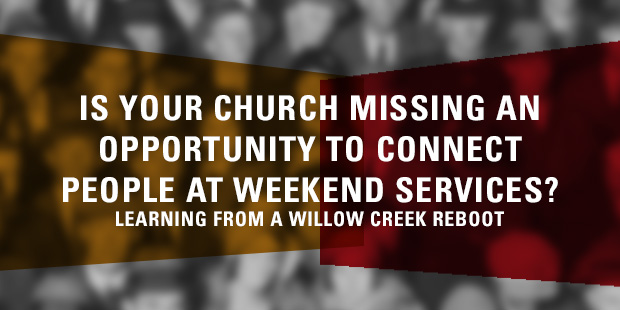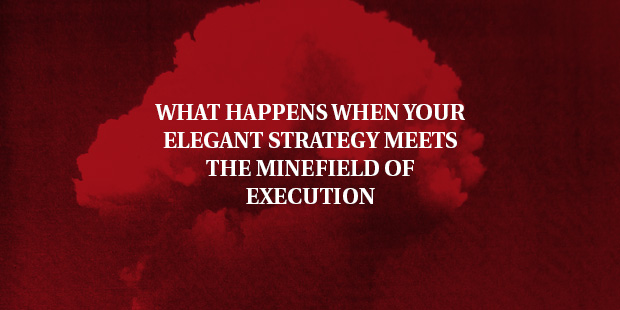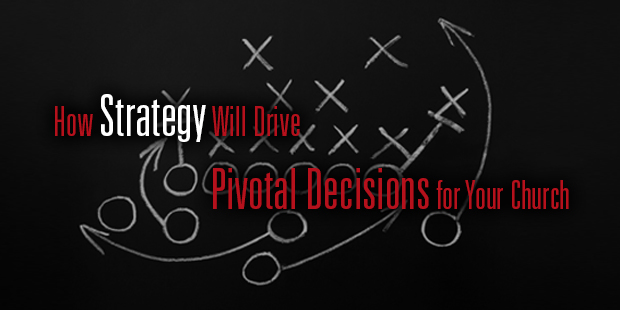
Planning, Strategy, and the Eisenhower Matrix
Dwight Eisenhower is noted as saying, “What is important is seldom urgent, and what is urgent is seldom important.” He is credited with the quote because of his emphasis on planning and strategy. From this quote, the Eisenhower matrix was born, which Stephen Covey later popularized. Here is my sketch of it:
The matrix has four quadrants:
- Urgent, Important: These are things that must be handled now and include ongoing execution, important conversations, and necessary interruptions. We will spend much of our lives in this quadrant, as these are things we must do, things we are honored to do.
- Important, Not Urgent: This is where leaders do their strategic planning and most thoughtful and creative work. Wise leaders carve out time and energy to invest in this type of work. They plan for this time so they may plan for the future, prepare, and work closely with teams.
- Not Important, Not Urgent: These are unnecessary distractions that provide little or no value. Wise leaders constantly look to stop doing these things.
- Urgent, Not Important: These are urgent tasks that come up but can be handled by someone else or should be handled by someone else because another is more qualified or ultimately responsible for the urgent matter. In other words, it should not be of deep importance to you. These items should be delegated or outsourced.
As I have led and watched others lead, here are three thoughts for leaders:
Take time to plan work, not just do work.
Instead of thinking strategically, many leaders run chaotically in a plethora of directions. The result of not investing ample time in Quadrant I is chaos, wasted energy, and mindless execution. If you never spend time in Quadrant I, you are unable to process and learn from all the activity, and you lack the ability to plan for the future.
The unnecessary robs energy from the important.
It is really Quadrant III that steals the important energy from leaders, energy that is needed for Quadrant I and Quadrant II. As Peter Drucker stated, “There is nothing so useless as doing efficiently that which should not be done at all.” Leaders who don’t take time to evaluate what shouldn’t be done in the first place continue to waste time and energy on the unimportant.
The urgent and important can overwhelm.
Many leaders carry resentment and fatigue for the activities that fall into Quadrant II—the urgent and important that constantly comes up. But Quadrant II is significant, and much of the impact we make happens in this quadrant. In Quadrant II are unplanned conversations with people who need our counsel, unplanned crises that need our leadership, and important tasks that get the work done. So that the important and urgent don’t crush us, leaders must appropriate energy from Quadrant III and Quadrant IV.

Tags: Eisenhower, Eisenhower Matrix, Eric Geiger, Planning, Strategy

































